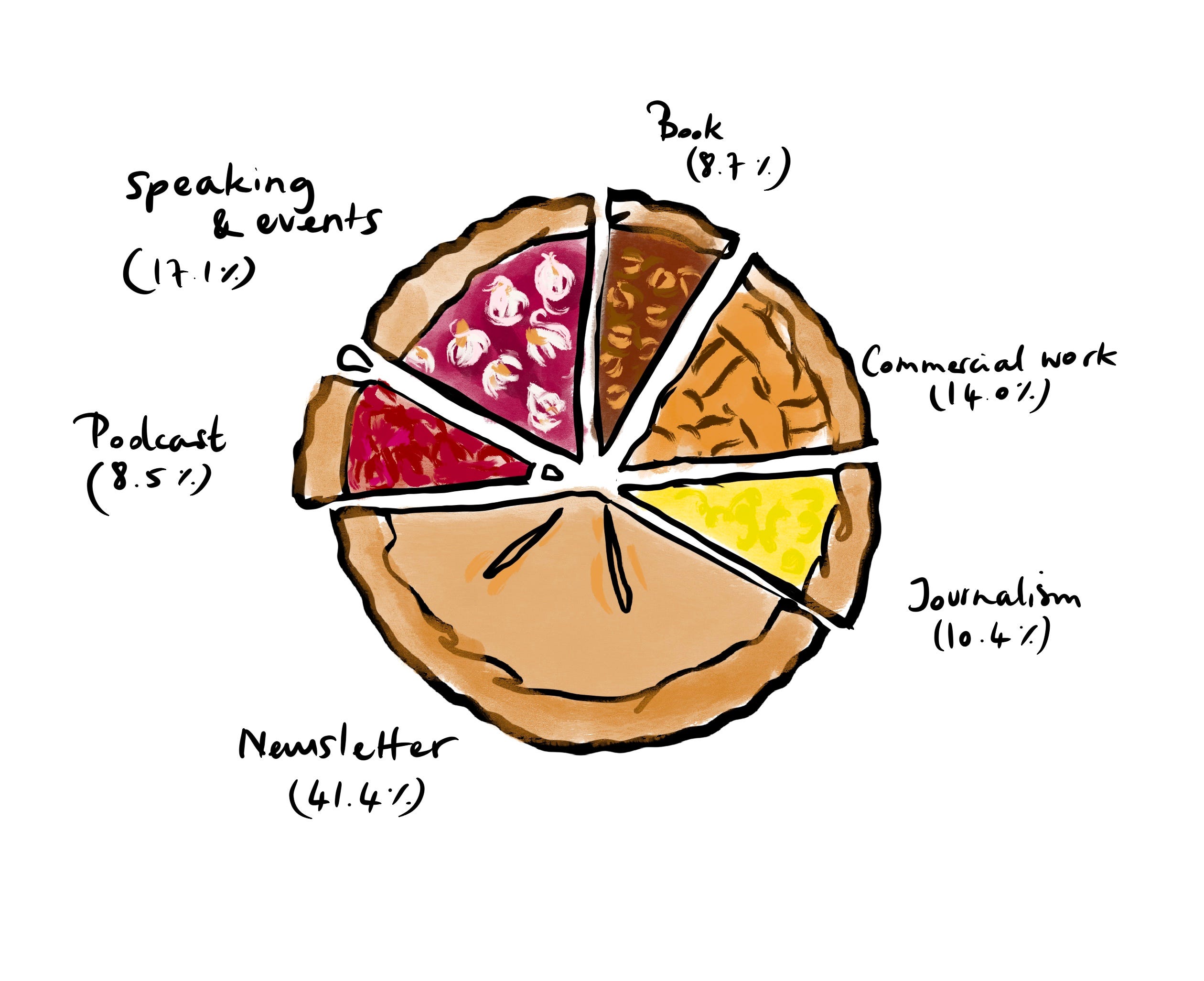I’m going to tell you how much I earn.
It’s not easy to share rates as a freelancer. Not just because it’s scary putting your salary on the internet (!), but because no single figure can give a complete picture. In the last job I was doing before I went freelance, I earned £55,000. Everyone understands that figure. It means roughly £3,400 landed in my bank account every month that I could do with as I chose.
It’s not quite the same when you’re self-employed. Earning £55,000 as a freelancer doesn’t feel the same as earning that amount as an employee. To start with, no month looks the same. I’ve had £12,000 months, duly followed by £800 months. With my old wage, I was also somehow more detached from it than I am with what I earn now. To me, a salary was an arbitrary amount someone else decided to give me, not one I cobbled together on my own. My freelancer income, on the other hand, is a lot more personal.
But I’m going to get over myself and share what I earn because I believe wage transparency is vital in achieving pay parity. As for the logistics of sharing your freelance salary with others, what figure do you give? Do you share your total earnings, before you account for expenses, or do you share your profits? I.e. the amount you actually keep. Neither is a like-for-like comparison to an employee’s salary. Employees don’t have business expenses they have to cover, but similarly, because freelancers can offset their costs (either in full or in part), it means their living costs are lower. Us freelancers can expense things like part of our rent and utility bills, phone costs, travel and computers. Put simply, a salary is not the same thing as profits from a freelance business.
In the end, I decided to base my pie on turnover because I think it gives you a clearer sense of what’s possible to earn. Costs can vary, so this gives you a top-level idea of what my freelancing brings in. To be totally clear, this means that the percentages you see above relate to the total amount of money that slice of income brought in, before accounting for their costs (and tax!). This is really important to emphasis because some slices have much bigger costs than others.
The podcast, for example, I split the profits with my co-host and producer and we pay various fees to run it. So while it looks like I earned nearly the same amount from the podcast as I did from journalism, in terms of profit, as in actual money in my bank account, the gap was much larger than 2%.
And in the case of the newsletter, I pay a substantial chunk (over 15%) in fees, plus I pay an illustrator and while I was writing my book, I paid for an editorial assistant. Other than a couple of notepads, my journalism work has minimal direct costs.
I’m far from the first person to share my earnings, as this transparency trend among freelancers has been bubbling for a while now. This week, the brilliant Sian Meades-Williams of Freelance Writing Jobs, posted a pie chart of how she made her money this year. She’s the inspiration for my pie chart (if you look up #FreelancePie on Twitter, you’ll see the other charts freelancers have been sharing). And earlier this year, writer Ashley C. Ford told the Longform podcast what she earns. Meanwhile, authors Alex Holder and Ann Friedman have also previously made pie charts of their earnings, too.
As you can see from my own pie, the biggest slick came from my newsletter and then the rest is a combination of journalism (which is any work I’ve done for media outlets, written and broadcast), commercial work (which is content marketing for brands and digital agencies), podcast (advertising money from my podcast), speaking and events (either speaking at other people’s events or hosting my own) and my book (the advance I received to write You’re the Business).
It’s also worth noting that this chart is based on the current financial year here in the UK, which started in April 2020 and isn't over yet. Also, it’s based on the money that I’ve actually received. In the case of my book, for example, I’m contracted to receive two more instalments of my advance this financial year but they haven’t been paid yet so they aren’t shown here.
Ok, I think that’s enough of me explaining myself. You just want to know what this pie’s worth, right? £47,400.
I’m really proud of my pie. I know that some people will look at it and say, as a freelance journalist, I’m not making much money from journalism. That’s true (kind of) but that’s also a problem with the media industry, not with freelancing. And that’s why I campaign for payment reform.
But while we wait for the media to treat its freelancers better, I’m thrilled that I can make a creative freelance career work for me. My income is varied and I love that. Not only does it feel more financially stable but, more importantly, it allows me to work on a mix of creative projects. All of which I find fulfilling and which make full use of my journalistic training and skills. I’m happy with my six slices of freelance pie 🍰


